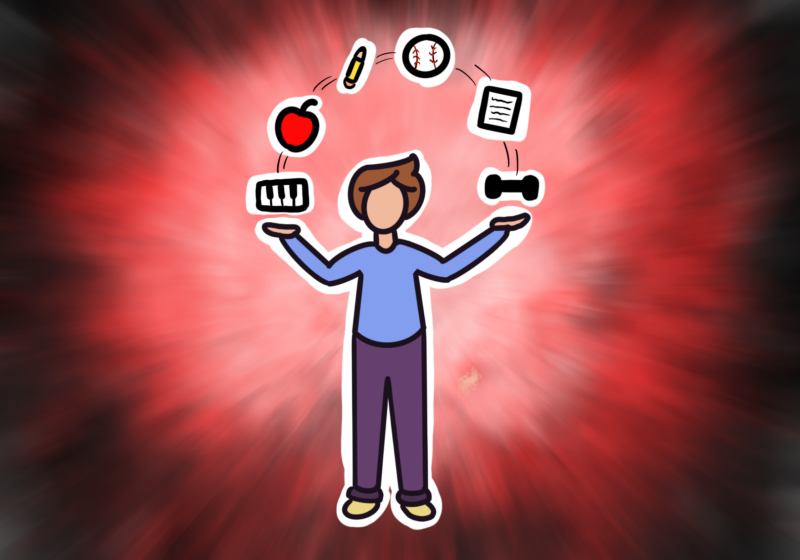UR has been using cameras for security purposes since 1996 to improve Security services, but there is now a wide variation in the use and importance of cameras watching students. UR Security has been adding cameras steadily, focusing this year on outlying parking lots and the Medical Center, with eight new cameras in Park Lot, and plans to add 10-15 more, according to UR Security Director Walter Mauldin. “This year has been a growth year for cameras,” Mauldin said. “Fifteen more are scheduled to fill in places. We’re about to install some more in Lot One of the Medical Center and in Lots Two and Three.”Mauldin stated that several million dollars have been spent over the past few years for the system, which includes a total of 113 cameras currently in use for the River Campus, Medical Center and Eastman School of Music, with two exterior cameras mounted on buildings at the River Campus and 51 total on campus directed on parking lots, roadways and pathways. The areas with the most cameras recording activity on campus are perimeter locations with pedestrian traffic at all hours. “There [are] two major areas,” Mauldin said. “One [is] more frequently used parking lots and the second would be the perimeters of the medical center. There are people in these places at all hours of the day and night.”The cameras act as a crime prevention measure, and have helped primarily in the identification of perpetrators. Mauldin sees the camera system as worthwhile for this reason. “I think it’s a good investment,” he said. “It has proved itself useful in giving us prompt information. We’ve observed [crimes] during the event, and we’ve used them after for identification. We’ve caught burglaries in progress at Hill Court.”Mauldin stressed, however, that the cameras do not act as replacements for officers on patrol. “All the cameras that we have are in areas where officers are going to be anyway,” he said. “They’re all in public spaces, where there will be an officer stationed.”There is also an officer watching the monitors at all times, and someone viewing the different cameras at 20-minute intervals.The cameras are constantly recording, and one of the most important aspects is being able to recall recorded footage if a criminal incident occurs, as well as give Security officers information prior to responding to a scene. “It’s extra eyes,” Mauldin said. “If someone is acting in a suspicious manner in the parking lot, we can have a point of view quickly and help out an officer, so they have a little information for when they arrive.” Many of the officers are out on patrol, with one officer for thousands of parking spaces at any given time, and the cameras act as a useful addition for prevention of break-ins and stolen vehicles. In addition to installing new cameras, security is also in the process of upgrading 22 of their cameras that have outlived their service life. Security cameras insideInformation Technology Services also employs the use of cameras, installed three years ago. Some are mounted in the ITS Center, but cameras are also used in the Educational Technology Center, Taylor Hall and Hylan Hall. These were installed mainly for students to be able to link into the ITS Web site and see if there is available seating in the computer classrooms. “We installed the cameras to allow [students] to make good choices about what facilities to go to,” ITS analyst and programmer Joe Pasquarelli said. “You don’t want to hike across campus in the snow and see what’s going on. At the same time, we can use it for security.”As a further security measure, the camera Web site is on a private server. This means the live camera feed is secure from being viewed from outside the university.Incidents of stolen laptops and digital cameras have occurred, but the cameras, which have been installed in a series most recently including the Ed Tech center, were not put in place to watch over student activity, but rather as a service of ITS. “The Ed Tech center was on the list of facilities we wanted to expand the service to,” Pasquerelli said. “Having the cameras is part of our basic package as ITS.”Fred Wagner, an analyst with ITS, also stressed that it is a convenience for students and not used as a monitoring mechanism. “It’s a visual record,” he said. “There’s no one sitting there watching it – it’s not being used as surveillance.”This is also the case in Rush Rhees Library and in Wilson Commons. Rush Rhees has few cameras, focused on the rare books section to watch when materials are being used, at the entrance and in the Great Hall, focused on the exhibit cases. Dean of Libraries Ron Dow noted that the library community at UR is an adult community, and unlike other schools, UR does not stress a high-security environment. “There are a lot of libraries in the country with large amounts of security – with guards at the door and security systems,” he said. “Here we trust the students. If the buzzer goes off, we trust them to bring back the book. We’re a community of adults. It’s also very expensive to have those kind of measures in a library.” Cameras are low-cost, and after an outside company came and installed them, act as a low-cost way to provide a record for security if need be. Theft has very rarely occurred in the library since cameras were installed seven years ago, and the tapes from the cameras are used only in the event of a crime. “We’ve had occasions where fraternity members have locked themselves in here and tried to steal things,” Dow said. “They got caught on tape and we turned the tape over to the Dean of Students. They were able to identify them readily. But no one has done that since.”The system is now entirely digitized, and soon to be directed to one main system that Security will be able to tap into to review certain camera footage. “Security can dial in with the IP address to view whatever area,” Senior Library Assistant Renee Johns said. “If a laptop is stolen, if someone is harassed, Security can look at the tapes themselves.”Wilson Commons has only one Web camera in use, and after the recent incident of having pictures stolen from Havens Lounge, a camera system was looked into but decided against. “Once we looked at the cost and effectiveness we decided we didn’t want to do it,” Director of Student Activities and Wilson Commons Anne-Marie Algier said. “There are lots of other things I’d rather put money toward that would better student life.”Due to the low amount of theft, both Dow and Algier conceded that using cameras for security purposes in their respective buildings is not something that falls high on the priority list. Students also do not appear concerned with the camera usage. “I don’t really care,” freshman Barbara Yang said. “It doesn’t affect me – doesn’t affect any of us. I don’t think it does. But I guess it’s good.” Others feel that if used correctly, cameras can be suitable on campus. “I think it’s good to have it in the parking lots, you know, for people who have cars,” senior Renee Williams said. “I think it’s appropriate in parking lots.” Student privacy is a contentious issue when the use of cameras comes into play, which the university community has taken measures to respect. No cameras look inside living areas, and one camera mounted on Todd Union was moved after complaints that Security was using it to look inside private rooms. Mauldin noted that the cameras are used with every good intention and within legal rights. “[The cameras] are used for observing criminal behavior and for legitimate observation. Ours is an issue of public safety.” Linden can be reached at klinden@campustimes.org.
Boar's Head Dinner
Masked protesters disrupt Boar’s Head, protest charges against students
Protesters gathered in front of the Highe Table and urged the University to drop the criminal charges against the four students recently charged with second-degree criminal mischief, saying that the University’s response is disproportionate compared to other bias-related incident reports.
hobbies
Hobbies and mediocrity: you don’t have to be good at everything
Writing became something I had to be good at in order to share.



